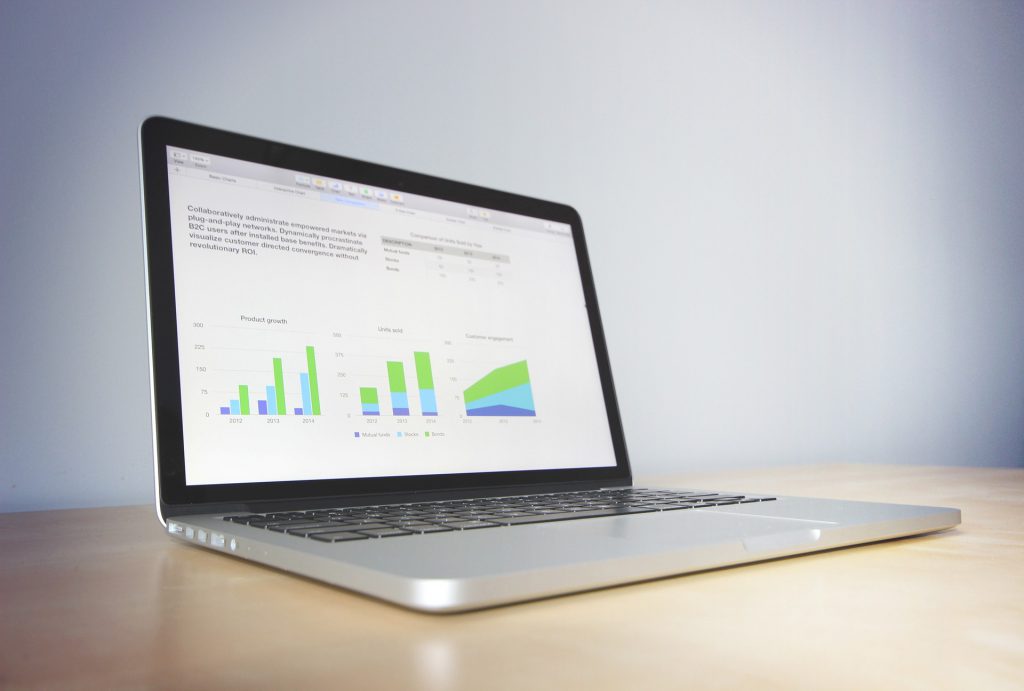Organisations constantly face challenges to maintain their competitive edge and to come out on top. These challenges come from evolving market trends, emerging competitors and shifting consumer preferences.
To address these challenges effectively, businesses need a full understanding of their position within the market.
A competitor benchmarking matrix serves as an invaluable tool for businesses to gain a holistic view of their performance relative to their competitors.
By systematically comparing key performance indicators (KPIs) across a range of relevant metrics, businesses can identify areas where they excel, areas that require improvement, and opportunities to gain a competitive advantage.

What Is A Competitor Benchmarking Matrix?
A competitor benchmarking matrix is a strategic tool that enables businesses to assess and consider their performance against their key competitors. It provides a structured framework that allows for the evaluating and comparing aspects of business operations.
This includes market share, product quality, customer satisfaction, pricing strategies, marketing effectiveness and financial performance.
The insights offered from a competitor benchmarking matrix can be used to inform strategic decision-making, identify areas for improvement. They also allow businesses to develop targeted strategies to gain a competitive edge in the market.
Competitor Benchmarking Matrix: The 7 Key Components
1) The key competitors
The selection of key competitors is a key part of a meaningful benchmarking exercise. Businesses should identify their direct rivals in the market. This should be done by focusing on those that share similar target markets, product offerings and value propositions.
These competitors provide the most relevant comparison points for assessing a company’s competitive position. By identifying key competitors, businesses can avoid benchmarking against irrelevant companies and ensure that the analysis is focused and actionable.
2) Key performance indicators (KPIs)
KPIs are vital for measuring and comparing a company’s performance against its competitors. Businesses need to select KPIs that align with their strategic objectives and provide a full assessment of their strengths and areas for improvement. Some common KPIs for competitor benchmarking include:
Market share: This metric indicates the percentage of a company’s sales in a given market compared to the total sales of all competitors in that market.
Product quality: This metric measures the quality of a company’s products based on customer feedback, product testing, and industry standards.
Customer satisfaction: This metric assesses customer satisfaction with a company’s products, services, and overall brand experience.
Pricing strategies: This metric compares a company’s pricing to its competitors, taking into account factors such as product value, target market, and competitor pricing.
Marketing effectiveness: This metric evaluates the effectiveness of a company’s marketing campaigns in driving brand awareness, generating leads, and converting customers.
Financial performance: This metric measures a company’s financial health and profitability, including metrics such as revenue growth, net income, and return on investment.
3) Data gathering
Obtaining accurate and up-to-date data is essential for conducting a meaningful benchmarking exercise. Businesses can gather data from various sources, including:
Public records: This includes publicly available information such as company financial reports, press releases and regulatory filings.
Industry reports: These reports provide insights into industry trends, market dynamics and competitor performance.
Analyst research: Analyst reports offer expert analysis of industry trends, company performance, and competitive landscapes.
Direct competitor interactions: This may include industry events, trade shows and direct competitor interactions to gather insights into their strategies, products, and services.
4) Data analysis
The collected data is analysed to identify patterns, trends, and insights that can inform strategic decision-making. This analysis should focus on comparing KPIs across competitors, identifying relative strengths and weaknesses, and uncovering potential opportunities and threats.
5) Visual representation
Effective communication of insights is crucial for making benchmarking actionable. Businesses should present the analysed data in a clear and visually appealing manner using tables, graphs and matrices.
This visual representation enhances comprehension, facilitates clear comparisons and aids in identifying actionable recommendations.
6. Continuous Monitoring
The world of business is dynamic, and competitor benchmarking matrices must reflect these changes. Businesses should regularly monitor competitor activity and update the benchmarking matrix to maintain its relevance and ensure strategic agility.
This continuous monitoring allows businesses to adapt their strategies to address emerging trends, competitor actions, and market shifts.

The 3 Key Benefits Of Competitor Benchmarking
1) Strategic decision-making
Competitor benchmarking provides businesses with valuable insights that can inform strategic decision-making across various aspects of the organisation, including:
Product innovation: By identifying competitor strengths and weaknesses in product offerings, businesses can identify gaps in the market, areas for improvement, and opportunities for innovation.
Pricing optimisation: By comparing pricing strategies across competitors, businesses can gain insights into the pricing dynamics of the market and optimise their pricing tactics to maximise profitability.
Marketing effectiveness: By understanding competitor marketing strategies and their effectiveness, businesses can refine their own marketing campaigns and messaging to better resonate with target audiences.
Resource allocation: By evaluating the resource allocation of competitors and their impact on their performance, businesses can optimise their own resource allocation strategies to maximise efficiency and productivity.
2) Achieving competitive advantage
Competitor benchmarking empowers businesses to gain a competitive advantage by:
Capitalising on opportunities: By identifying areas where competitors are excelling, businesses can identify opportunities to differentiate their offerings and attract customers seeking superior value.
Addressing weaknesses: By benchmarking against competitors, businesses can identify areas where they are lacking and take proactive measures to address these weaknesses.
Shaping industry dynamics: By understanding competitor strategies and the broader landscape, businesses can influence industry trends and market dynamics to their advantage.
Adapting to market shifts: By monitoring competitor activity and market trends, businesses can adapt their strategies promptly to address emerging challenges and capitalise on new opportunities.
3) Navigating a dynamic landscape
Competitor benchmarking provides businesses with the agility to navigate their industries by:
Responding to market shifts: By understanding competitor reactions to market changes, businesses can anticipate and respond to shifts in consumer preferences, technological advancements and regulatory changes.
Identifying potential threats: By monitoring competitor activities and market trends, businesses can identify potential threats early on and proactively develop strategies to mitigate risks and protect their market share.
Seizing emerging opportunities: By keeping an awareness of competitor moves and market developments, businesses can seize emerging opportunities to differentiate their offerings, expand into new areas, and gain a competitive edge.
Creating An Effective Competitor Benchmarking Matrix
To create an effective competitor benchmarking matrix, businesses should follow a structured approach:
Define the ccope: Clearly define the scope of the benchmarking exercise, specifying the industry, market segment, and relevant competitors. This ensures focused and relevant comparisons.
Identify KPIs: Select KPIs that align with the organisation’s strategic objectives and provide a comprehensive assessment of its performance.
Gather data: Accurately gather data for each KPI from relevant sources.
Analyse data: Employ the correct statistical methods that allow you to identify patterns, trends and insights from the collected data.
Visualise findings: Present the analysed data in a clear and visually appealing way by using tables, graphs, and matrices.
Monitor & update: Regularly monitor competitor activity and update the benchmarking matrix to reflect changes.
Concluding Thoughts
Competitor benchmarking matrices serve as a strategic compass for businesses aiming to achieve sustainable success in the dynamic and competitive business world. By effectively harnessing the insights gleaned from these matrices, organisations can improve their performance, outmanoeuvre rivals, and establish a dominant position in their respective industries.

